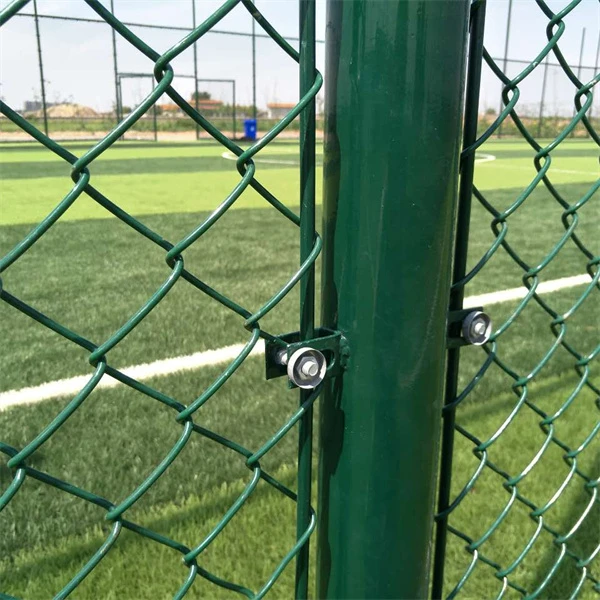Dec . 30, 2024 20:21 Back to list
grille galvanisée pour gabion factory
The Importance of Galvanized Grills for Gabion Structures An Overview of Manufacturing Processes
Gabion structures have gained considerable popularity in civil engineering and landscaping due to their versatility and robustness. These wire mesh cages filled with stones serve as retaining walls, sound barriers, and flood control mechanisms. To ensure their durability and effectiveness, the materials used in gabion production are critical, particularly galvanized grills.
Understanding Galvanization
Galvanization is a process that involves coating steel or iron with a layer of zinc to protect it from corrosion. When it comes to gabion manufacturing, using galvanized wire is essential because these structures are often exposed to harsh weather conditions, including rain, wind, and varying temperatures. The galvanized coating acts as a sacrificial barrier that prevents rusting and prolongs the life of the gabion, making it a reliable choice for both temporary and permanent installations.
Manufacturing Process of Galvanized Grills for Gabions
The manufacturing process of galvanized grills for gabions begins with the selection of high-quality steel wire. This wire is then drawn through a series of dies to achieve the desired diameter, which is typically between 2.0 mm and 5.0 mm, depending on the specific requirements of the gabion application. The wire must have sufficient tensile strength to support the weight of the stones and withstand external pressures.
Once the wire has been formed, it undergoes the galvanization process. This can be accomplished through hot-dip galvanization, where the cleaned wire is submerged in molten zinc, creating a thick and durable coating, or through electro-galvanization, where a thinner layer of zinc is applied through an electrochemical process. The choice of method depends on factors such as cost, desired lifespan, and environmental considerations. Hot-dip galvanization, while more expensive, typically offers superior corrosion resistance.
After galvanization, the wire is cut and bent into the necessary shapes to create the grills. These grills must be designed to interlock securely, facilitating a dense and stable structure once filled with stone. Precise manufacturing tolerances are important to ensure that each gabion grill fits together seamlessly, allowing for easy assembly in the field.
Advantages of Using Galvanized Grills in Gabion Design
The choice to use galvanized grills in gabion design brings several significant advantages
grille galvanisée pour gabion factory

1. Corrosion Resistance As mentioned earlier, galvanized grills offer excellent protection against rust, which is crucial for the longevity of gabion structures exposed to moisture.
2. Durability Gabions made with galvanized wire can withstand harsh environmental conditions, making them suitable for various applications, from flood control in riverbanks to decorative landscape features.
3. Flexibility in Design The use of grills allows for various configurations and sizes of gabions, making it easy to tackle different construction challenges and design unique solutions tailored to specific site conditions.
4. Cost-Effectiveness While galvanized materials may have a higher upfront cost compared to untreated options, the extended lifespan and reduced maintenance needs lead to lower overall expenses.
5. Environmental Friendliness Gabions made of natural stone and galvanized grills fit well in green construction practices. They promote natural drainage, reduce soil erosion, and blend aesthetically into the landscape.
Applications of Gabions with Galvanized Grills
Gabions featuring galvanized grills are utilized in numerous applications across many sectors. In civil engineering, they are commonly employed for retaining walls, erosion control, and road stabilization. In landscape architecture, they serve as decorative elements, planters, and seating areas, enhancing outdoor spaces while promoting ecological benefits. Additionally, they find use in river management to control sediment flow and protect shorelines.
Conclusion
The manufacturing of galvanized grills for gabion structures is a critical process that enhances the durability and effectiveness of these versatile systems. By understanding the importance of galvanization and the manufacturing techniques involved, engineers and builders can make informed choices that not only meet practical needs but also support sustainable and aesthetically pleasing designs in their projects. As the demand for gabions continues to grow, the role of high-quality galvanized grills in their performance and longevity will remain paramount.
-
Visualizing Gabion 3D Integration in Urban Landscapes with Rendering
NewsJul.23,2025
-
The Design and Sustainability of Gabion Wire Mesh Panels
NewsJul.23,2025
-
The Acoustic Performance of Gabion Sound Barriers in Urban Environments
NewsJul.23,2025
-
Mastering the Installation of Galvanized Gabion Structures
NewsJul.23,2025
-
Gabion Boxes: Pioneering Sustainable Infrastructure Across the Globe
NewsJul.23,2025
-
Custom PVC Coated Gabion Boxes for Aesthetic Excellence
NewsJul.23,2025
-
Installation Tips for Gabion Wire Baskets in Erosion Control Projects
NewsJul.21,2025






